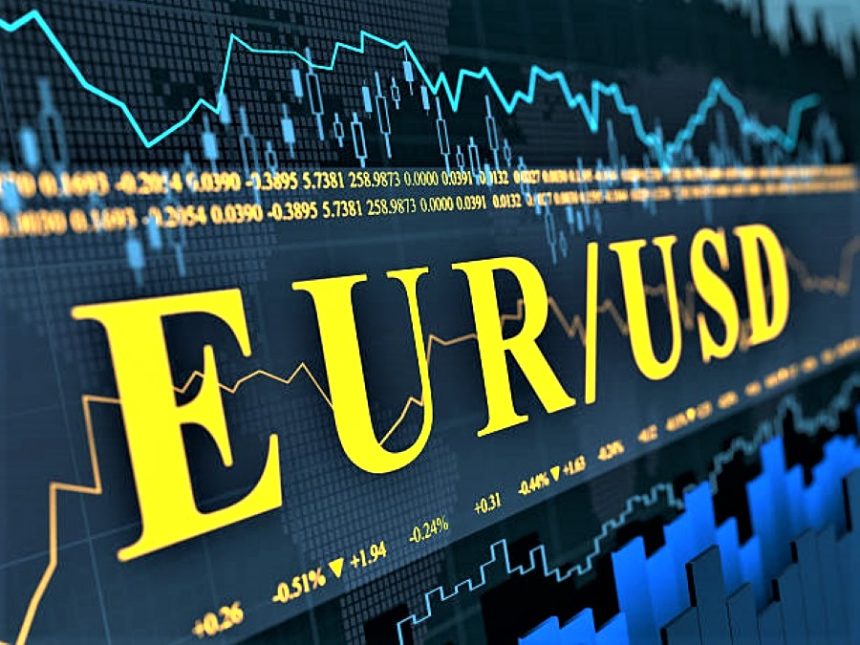EURUSD Treads Water Near 1.1350 as Tariff Uncertainty and Central Bank Policies Weigh.
The EURUSD currency pair remains in consolidation mode near 1.1350 during European trading hours on Tuesday. After a strong bullish move over the past few sessions, traders are now adopting a cautious stance. The US Dollar (USD) has found temporary relief after a prolonged selloff, but overall sentiment remains negative due to mixed signals on trade policy and increasing fears of a US recession.
The Greenback is struggling to maintain momentum as traders digest comments from Fed officials, analyze recent economic data, and monitor geopolitical tensions stemming from US President Donald Trump’s evolving stance on international tariffs. The US Dollar Index (DXY), which gauges the USD against a basket of six major currencies, holds near a three-year low of 99.00—a level last seen on Friday.
Markets remain on edge as Trump’s tariff strategy sends conflicting signals, and investors await further clarity on both the short- and long-term economic impact of these policies.
Trump’s Tariff Pause Fails to Inspire USD Strength
The USD remains vulnerable due to its fading appeal as a safe-haven asset. Market confidence in the Greenback eroded ever since President Trump announced a 90-day moratorium on reciprocal tariffs—excluding China. While this move was meant to ease global tensions, markets have interpreted it as indecisive and insufficient in countering the broader economic damage triggered by previous tariff escalations.
Further weighing on sentiment is the President’s proposal to temporarily suspend automobile tariffs. While this could potentially help US automakers recalibrate production and bring manufacturing back onshore, the policy’s timing and execution are raising more questions than answers. Investors are concerned about the long-term implications of erratic trade decisions, which have injected fresh uncertainty into global markets.
Fed’s Waller Supports Rate Cuts Amid Recession Warnings
Adding fuel to the fire, Federal Reserve Governor Christopher Waller warned on Monday that Trump’s new tariff policy represents one of the “biggest shocks” to hit the US economy in decades. Speaking to reporters, Waller stated that the central bank should focus more on the risk of a recession rather than inflation concerns.
“The effects of tariffs in raising inflation will be short-lived,” Waller noted, emphasizing the need for the Fed to pivot toward a more accommodative monetary policy. His comments strengthened the market’s conviction that the Fed will begin cutting interest rates as early as the next meeting, especially as the yield curve flattens and recession indicators flash red.
Indeed, bond markets have already responded. The 10-year US Treasury yield has surged more than 13% over the past six trading sessions, reflecting investor anxiety. Typically, higher bond yields indicate growing expectations of risk, and in this case, the premium demanded by investors is rising due to economic policy uncertainty.
ECB Rate Cut Expected, but Focus on Lagarde’s Guidance
On the other side of the Atlantic, the Euro remains in a holding pattern ahead of Thursday’s key European Central Bank (ECB) meeting. The ECB is widely expected to reduce its Deposit Facility Rate by 25 basis points to 2.25%. This would mark the sixth consecutive rate cut and signal the central bank’s ongoing efforts to revive economic activity amid a global slowdown.
While the rate cut is largely priced in, traders will be paying close attention to ECB President Christine Lagarde’s post-decision press conference. Markets are keen to understand how the ECB views the evolving tariff situation, the impact on the Eurozone economy, and whether further easing could be on the table in the second half of the year.
Some ECB officials have already voiced concerns over the economic implications of Trump’s tariffs. Many believe that inflation stemming from tariff impositions will be offset by increased product dumping from China, as Beijing looks for new markets to compensate for lost access to the US. In this scenario, deflationary pressures may actually build, further justifying policy accommodation.
Weak ZEW Data Adds to Eurozone Woes
Adding to the Eurozone’s challenges is fresh data from the ZEW Economic Sentiment Surveys. The latest results for April were dismal. The Eurozone-wide sentiment index dropped to -18.5, down sharply from the prior reading of 39.8 and missing expectations of +14.2. Similarly, Germany’s ZEW Sentiment plummeted to -14 from a previous 51.6, missing the forecast of 9.3 by a wide margin.
These figures underscore the growing concern among institutional investors about the future of the Eurozone economy, particularly as trade tensions between the US and China spill over into Europe.
Analysts at Barclays are now forecasting a Eurozone recession in the second half of 2025. Despite Trump’s 90-day tariff pause, the US recently announced a new 20% levy on select imports from the European Union. This move could further erode investor confidence and exacerbate already-fragile economic conditions.
US-EU Trade Talks: A Ray of Hope
Amid the gloom, there is a glimmer of optimism. US National Economic Council Director Kevin Hassett told Fox Business Network on Monday that talks with the European Union on tariffs were making “enormous progress.” Should these discussions result in meaningful concessions or a rollback of duties, the Euro could receive a modest boost.
Still, market participants remain skeptical. Many feel that the lack of consistency in Trump’s economic policy framework reduces the credibility of such negotiations. Any hint of a breakdown in talks could quickly reverse sentiment and lead to renewed volatility in EURUSD.
Technical Outlook: EURUSD Caught Between Major Catalysts
Technically, EURUSD remains in a rangebound pattern, consolidating gains made earlier in April. The pair faces immediate resistance at 1.1380, a psychological barrier, while support is seen at 1.1310, a level that previously capped upside attempts.
A breakout above 1.1380 could open doors to 1.1425 and beyond, particularly if ECB commentary is more dovish than expected or US economic data disappoints. Conversely, a break below 1.1310 could drag the pair back toward the 1.1275 region.
The Relative Strength Index (RSI) on the 4-hour chart is hovering near 56, indicating that momentum remains slightly bullish, but not overbought. Traders may continue to look for breakouts around Thursday’s ECB decision or any unexpected development from the US front.
Conclusion
The EURUSD pair trapped between two powerful market forces: shifting US trade policy under President Trump and upcoming ECB monetary easing. The short-term outlook remains neutral-to-bullish for the Euro, particularly as the US Dollar faces mounting pressure from recession concerns and dovish Fed rhetoric. However, weak Eurozone data and continued trade uncertainty could limit any sustained upward movement.
Investors should remain cautious and closely monitor both central bank guidance and geopolitical developments. With volatility likely to increase around the ECB meeting and any fresh headlines from Washington, the EURUSD pair could be poise for a sharp breakout in either direction.
[faq-schema id=”39389″]









